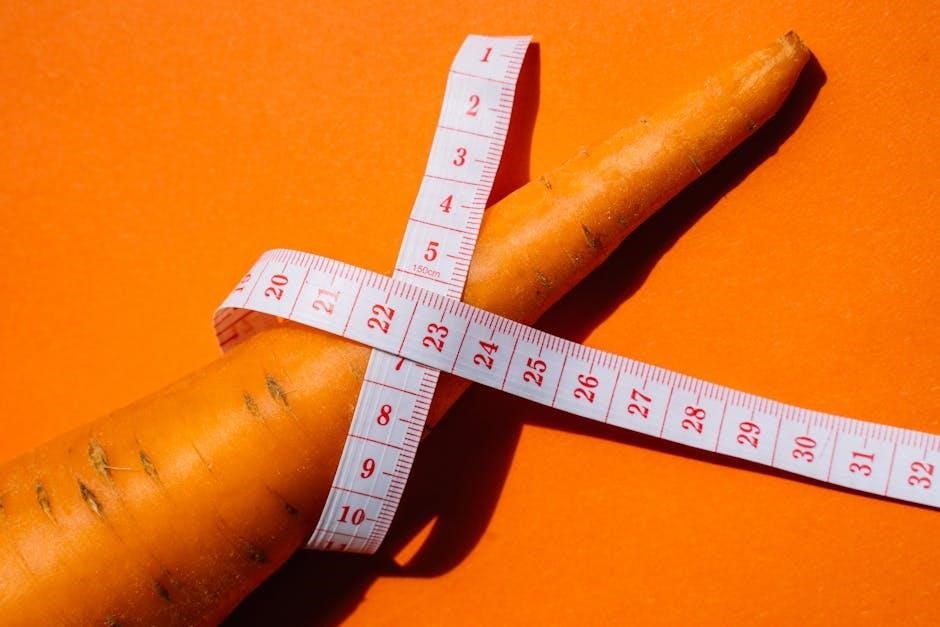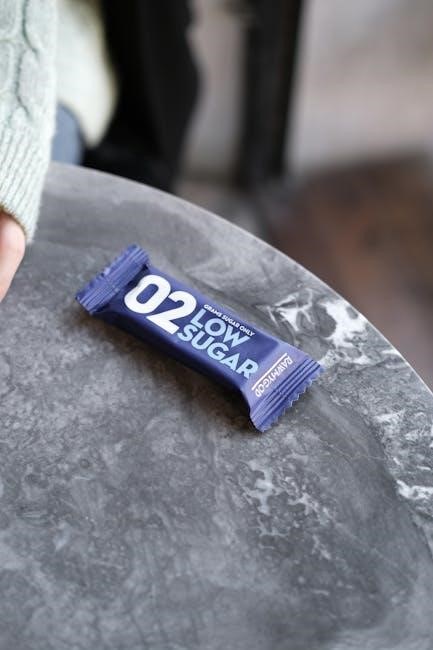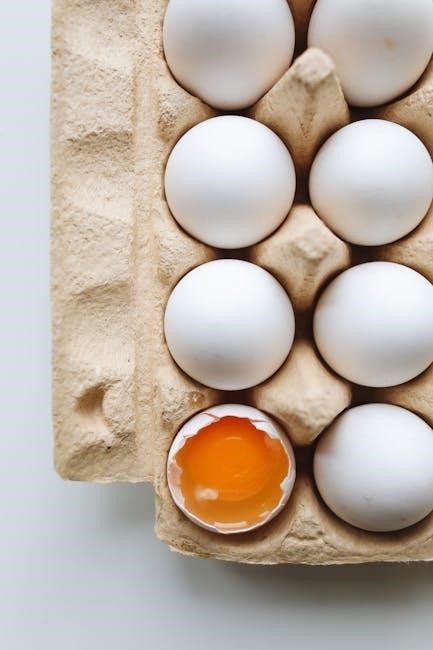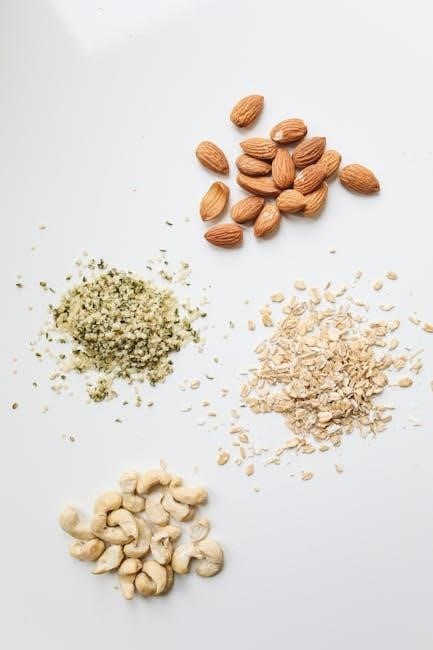
low mold diet pdf
The low mold diet is designed to support healing from mold illness by limiting exposure to contaminated food sources and restoring nutrient deficiencies, using a
nutrient-rich
approach always.
Purpose of the Diet
The purpose of the low mold diet is to provide a comprehensive approach to managing mold illness by eliminating potentially contaminated food sources and replenishing nutrient deficiencies. This diet is designed to support the body’s natural healing processes and reduce the accumulation of mycotoxins. By following the low mold diet, individuals can help to alleviate symptoms associated with mold exposure, such as respiratory issues, brain fog, and fatigue. The diet focuses on promoting a balanced and nutrient-rich diet, with an emphasis on whole, fresh foods. The overall goal of the low mold diet is to create an environment that is conducive to healing and recovery, by minimizing exposure to mold toxins and maximizing nutrient intake. This approach can be used in conjunction with other treatments, to support overall health and well-being. The low mold diet is a valuable tool for managing mold illness and promoting optimal health.
Importance of the Diet

The importance of the low mold diet lies in its ability to address the root causes of mold illness, by reducing exposure to mycotoxins and promoting a balanced diet. This diet is crucial for individuals who have been exposed to mold, as it helps to alleviate symptoms and support the body’s natural healing processes. By following the low mold diet, individuals can reduce their risk of developing chronic health problems, such as respiratory issues and neurological disorders. The diet is also important for maintaining overall health and well-being, by promoting a strong immune system and reducing inflammation. Additionally, the low mold diet can help to improve cognitive function, increase energy levels, and enhance overall quality of life. By incorporating the principles of the low mold diet into their lifestyle, individuals can take a proactive approach to managing their health and reducing their risk of mold-related illnesses. This diet is a vital component of a comprehensive approach to health and wellness.

Guidelines for the Low Mold Diet
Follow a structured plan using
specific
guidelines to ensure a successful transition to the diet always naturally.
Foods to Avoid
The low mold diet requires avoiding certain foods that are high in mold and mycotoxins, including apples, berries, lemons, limes, peaches, and pears, which are all considered high-sugar fruits.
These foods can exacerbate mold illness and prevent the body from healing.
It is also important to avoid foods that are high in starch, such as grains and legumes, as they can contribute to mold growth.
Additionally, foods that are high in lectins, phytates, and oxalates should be avoided, as they can cause inflammation and damage to the body.
A list of foods to avoid can be found in the low mold diet guide, which provides a comprehensive overview of the foods that should be avoided in order to support healing from mold illness.
By avoiding these foods, individuals can reduce their exposure to mold and mycotoxins and promote healing and recovery.
The low mold diet is a valuable resource for individuals who are struggling with mold illness and are looking for a way to manage their symptoms and promote healing.
It provides a clear and structured approach to avoiding foods that are high in mold and mycotoxins.
The diet is an important component of a comprehensive treatment plan for mold illness.
Foods to Enjoy
The low mold diet allows for a variety of nutrient-dense foods, including protein sources like organic, pastured meats, wild-caught seafood, and pastured eggs.
Nuts and seeds, such as almonds, chia seeds, flax seeds, and pecans, are also encouraged.
These foods provide essential nutrients and can help support the body’s natural healing processes.
Grass-fed beef, bison, buffalo, lamb, and veal are also recommended, as they are rich in nutrients and low in mold.
Poultry, such as chicken and turkey, can be consumed in moderation, as long as it is organic and pastured.
The key is to focus on whole, unprocessed foods that are rich in nutrients and low in mold and mycotoxins.
By incorporating these foods into the diet, individuals can support their overall health and well-being, while also reducing their exposure to mold and mycotoxins.
A well-planned low mold diet can help alleviate symptoms and promote healing, and can be a valuable component of a comprehensive treatment plan.
It is essential to choose foods that are fresh, whole, and nutrient-dense.

Mold and Yeast Containing Foods
Foods like cheese, buttermilk, and sour cream contain mold and yeast, and should be
limited
or avoided to minimize exposure to mycotoxins always naturally.
Foods to Limit
Certain foods can be high in mold and yeast, and should be limited or avoided to minimize exposure to mycotoxins. These foods include cheeses, such as stilton, buttermilk, sour cream, and sour milk products.
Foods that are high in sugar and starch can also contribute to mold growth, and should be limited.
Some examples of foods that are high in sugar and starch include fruits, such as apples, berries, lemons, limes, peaches, and pears.
It is also important to note that some foods can be contaminated with mold during processing or storage, and should be handled and stored properly to minimize the risk of mold exposure.
By limiting or avoiding these foods, individuals can reduce their exposure to mycotoxins and help to support their overall health and well-being.
A low mold diet can be an effective way to manage mold illness and alleviate symptoms, and should be used in conjunction with other treatments as recommended by a healthcare professional.
The key is to focus on whole, nutrient-dense foods and avoid foods that are high in sugar, starch, and mold.
This can help to support the body’s natural healing processes and promote overall health and well-being.
Hidden Sources of Mold
Mold can be found in many hidden sources, including food products that are not typically thought of as being high in mold.
Some examples of hidden sources of mold include fermented foods, such as sauerkraut and kimchi, as well as foods that are high in yeast, such as bread and beer.
Other hidden sources of mold can include foods that are past their expiration date or have been stored improperly, allowing mold to grow.
Additionally, foods that are processed in facilities that also handle mold-containing foods can be contaminated with mold.
It is also important to note that some foods can be contaminated with mold during transportation or storage, making it difficult to identify the source of the mold.
By being aware of these hidden sources of mold, individuals can take steps to minimize their exposure and reduce their risk of mold illness.
This can involve reading food labels carefully, checking expiration dates, and storing food properly.
Mold can be a hidden threat to health, but by being informed and taking precautions, individuals can protect themselves.
This is an important part of maintaining a healthy diet and lifestyle.

Implementing the Low Mold Diet
Using a structured approach to implement the diet is crucial for success always online.
Phase I Protocol
The Phase I protocol is a critical component of the low mold diet, typically lasting 4-8 weeks. This initial phase is designed to help the body eliminate existing mold toxins and restore balance to the digestive system. A key aspect of this phase is the removal of high-sugar and starchy foods, which can exacerbate mold growth. Instead, individuals should focus on consuming fresh, whole foods that are rich in nutrients and fiber. The protocol may also involve the use of supplements and other therapies to support the body’s natural detoxification processes. By following the Phase I protocol, individuals can lay the foundation for a successful low mold diet and take the first steps towards recovering from mold illness. The protocol should be tailored to the individual’s specific needs and health status, and should be implemented under the guidance of a qualified healthcare professional. Regular monitoring and adjustments are necessary to ensure optimal results.
Shifting to a Low Mold Diet
Shifting to a low mold diet requires a gradual and intentional approach, starting with an assessment of current eating habits and lifestyle. It involves identifying and eliminating high-mold foods and replacing them with nutrient-dense alternatives. A
comprehensive guide
can help individuals navigate this transition, providing a clear roadmap for making sustainable changes. By prioritizing whole, unprocessed foods and minimizing exposure to mold-containing products, individuals can reduce their toxic load and promote overall well-being. This shift also entails being mindful of hidden sources of mold in the environment and taking steps to mitigate their impact. With patience and dedication, individuals can successfully transition to a low mold diet and experience the benefits of improved health and resilience. A well-planned approach is essential to ensure a smooth and lasting transition to a low mold diet, and to achieve optimal results. Regular progress monitoring is also necessary.